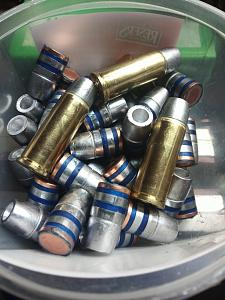Hello everyone.
I've got a question about HPs and long range stability. I seem to remember a long time ago someone saying that moving the center of mass rearwards helped with stability.
I have shot different nose shapes from a 454 out to 1000 yards, but never tried any hollow points.
So, anyone have any actual experience with the subject?
I started casting with a mold that's been on the shelf for a while. It's a NOE 480-375 gc, with the hp it drops at 355 from 50-50 WW-PB and is .480" and I sized them to .477" and lubed with Carnauba Blue. I shot them out of a Ruger Bisley, only at 25yds so far to get it on paper. I have 75yds at the house, but I wouldn't expect any problems to show up until at least a couple hundred yards.
My load was 20gn of 2400 for 1284fps.


|
   
   
|


|






 Reply With Quote
Reply With Quote







 [/IMG]
[/IMG] [/IMG]
[/IMG] [/IMG]
[/IMG] [/IMG]
[/IMG] [/IMG]
[/IMG] [/IMG]
[/IMG]




 [/IMG]
[/IMG] [/IMG]
[/IMG] [/IMG]
[/IMG] [/IMG]
[/IMG]




